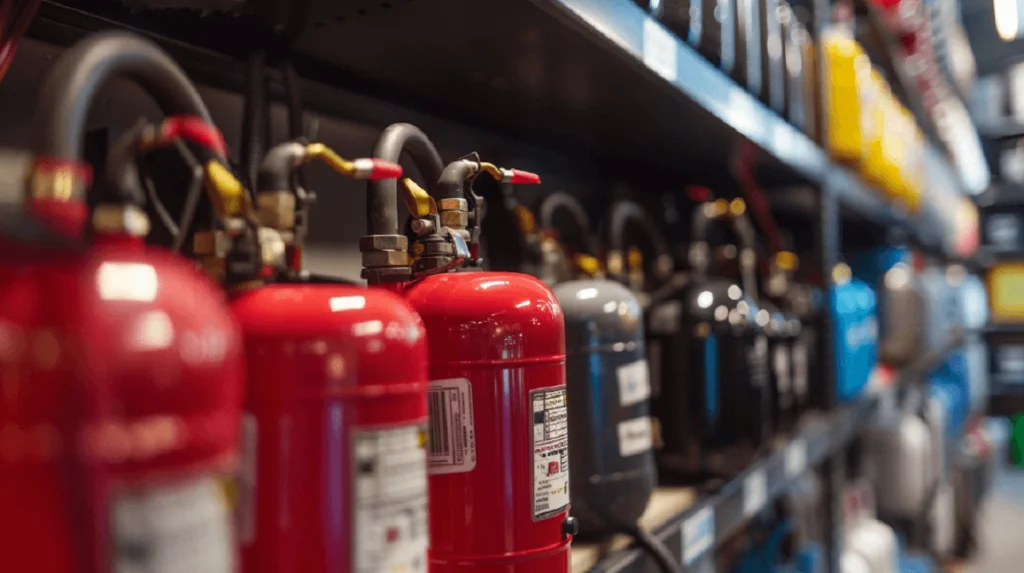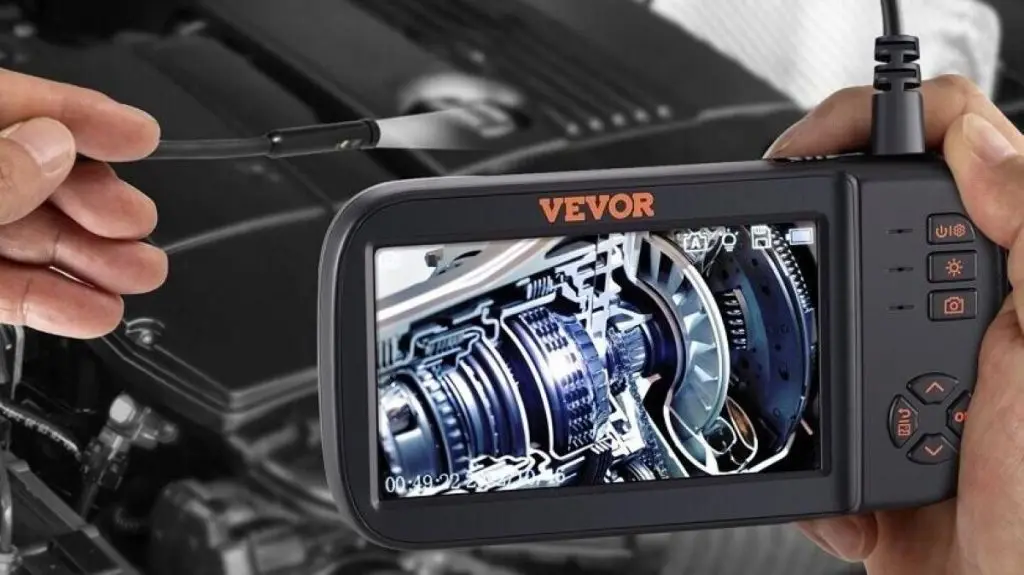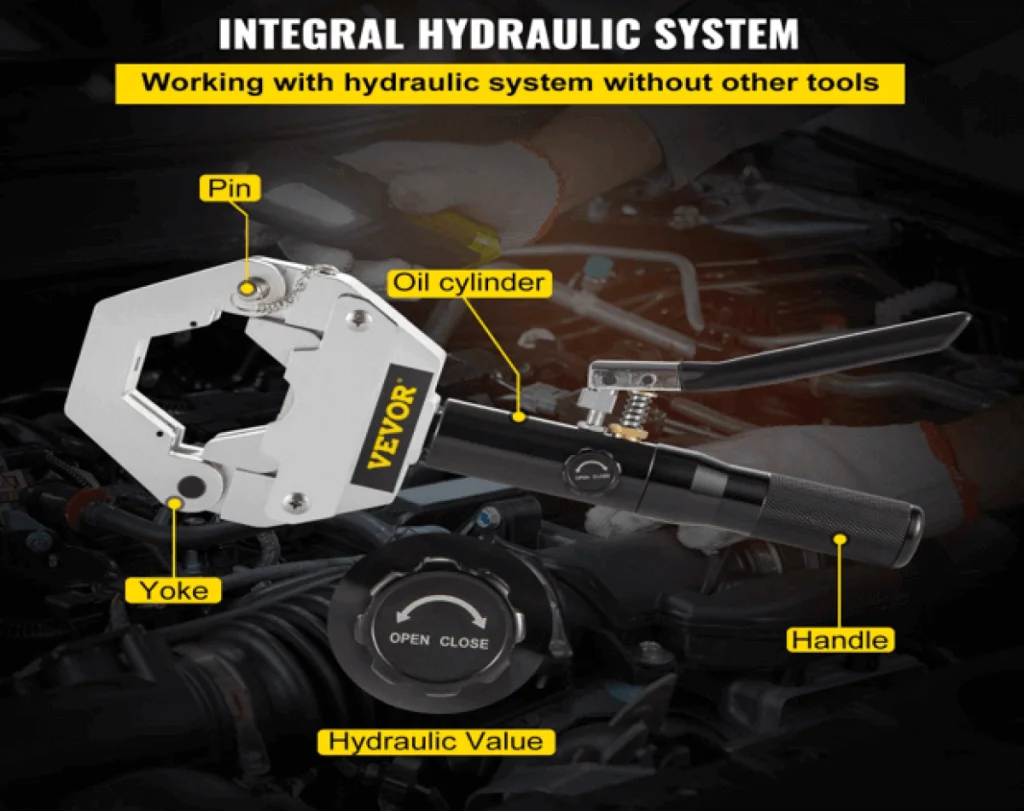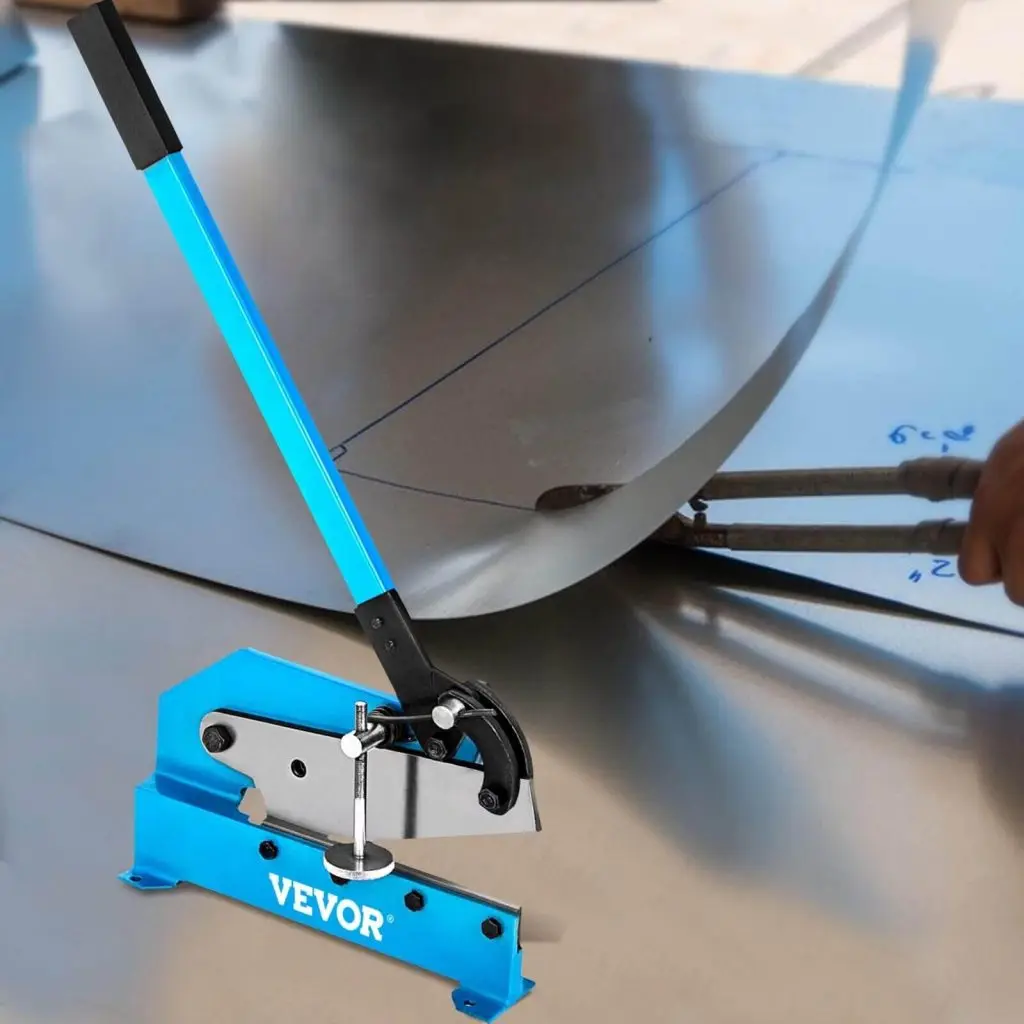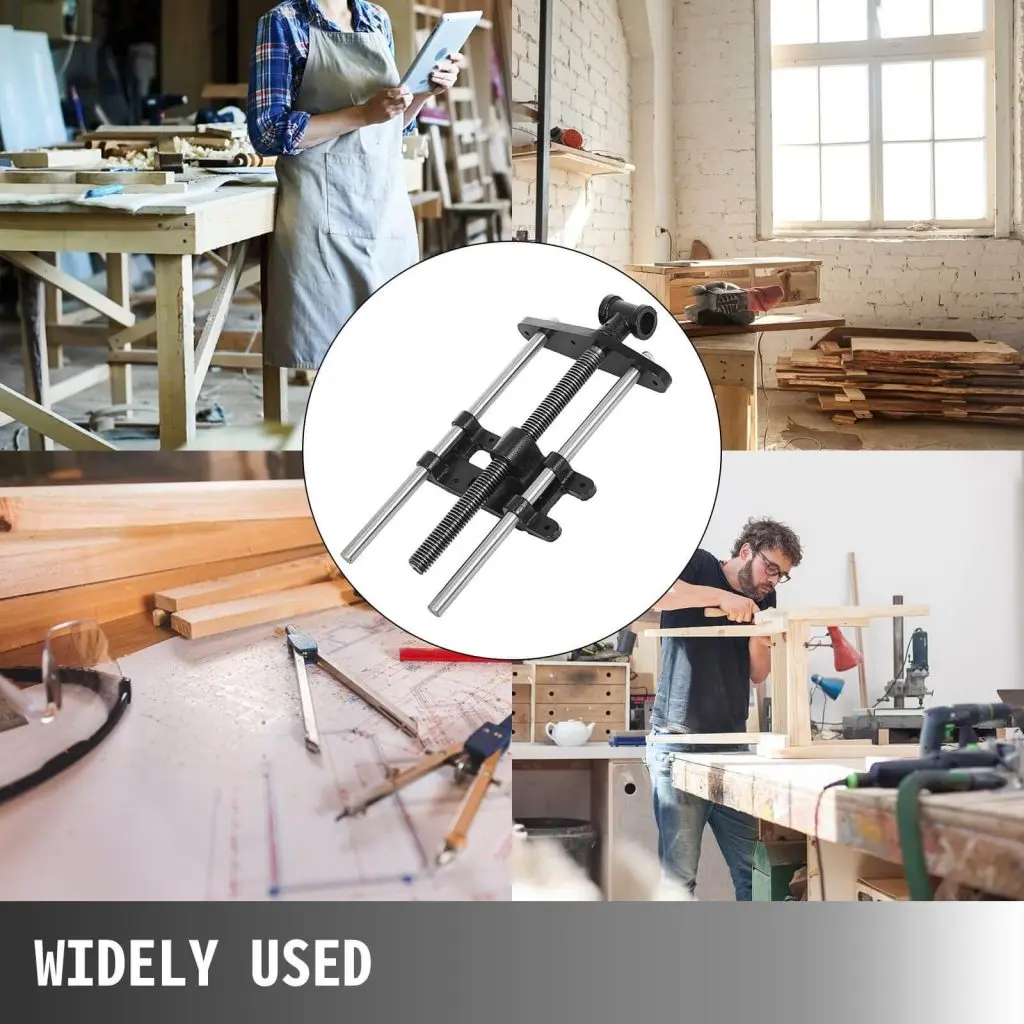Air compressors are invaluable power air tools at construction sites or home repairs. However, while air compressors (also, pneumatic compressors) are generally safe for domestic uses, working with the wrong size or misusing one could cause injury or, in the worst case scenarios, death. That’s why we carefully explore all the details about choosing the right air compressor size for your tools.
One of the easiest ways to find the perfect air compressor size is by reviewing your air pressure tools for their highest pressure and air delivery requirements. Choose an air compressor model that exceeds these requirements and you’re good to go. Of course, choosing the right air compressor model is almost as important as purchasing from the right brand. You want to explore top-quality and reliable air compressors from VEVOR for your unique industrial or domestic needs.
Once you’re aware of the perfect brand to patronize when you’re ready to select the right size, you’re ready to explore how to choose the ideal air compressor size for your air tools.
Table of contents
- Understanding Air Compressor Sizing Basics
- Assessing Your Needs: What Size Air Compressor Do I Need?
- Air Compressor Tank Size and Your Project Demands
- The Significance of Duty Cycle in Air Compressor Sizing
- Calculating the Right Size: Practical Examples and Tips
- Additional Factors to Consider When Choosing an Air Compressor
- Why Choose VEVOR Air Compressors?
Understanding Air Compressor Sizing Basics
To understand the world of air compressors and their sizes, you want to note some basic terms and fundamental compartments in every air compressor. This section explores crucial metrics for air tools’ requirements, plus why they’re vital for selecting the perfect air compressor size for your home, office, or construction site.
The Role of CFM and PSI in Air Compressor Performance
Two critical metrics to consider when assessing the perfect air compressor size for you are the air pressure rating (rated in Pounds per Square Inch) and air volume of air delivery (rated in Cubic Feet Per Minute). Remember, you want an air compressor with a slightly higher rating (at least 20% higher) than the CFM requirement for your most powerful tool.
Pressure Gauge: PSI (Pounds per Square Inch)
CFM and PSI are interwoven. The PSI indicates how much air pressure goes to each square inch of area. While most contemporary air compressors provide sufficient PSI for running small to medium home tools, purchasing a larger PSI has more advantages. Since there’s more air in the tank, you can operate more tools for longer before air compression begins.
Meanwhile, most domestic air tools require a PSI within the range of 70-100. But since most air compressors are graded at 135 PSI, you’ll most likely not have any challenges in getting the perfect PSI compressor for home-use air tools. So you want to concentrate on the CFM specifications of your preferred air compressor tool.
Assessing Your Needs: What Size Air Compressor Do I Need?
Once you know some basic metrics to look out for in an air compressor, it’s time to explore the perfect size you need for various operations or tasks. Meanwhile, most air compressors are within the range of 10-110 CFM. You want to determine the perfect range for the category of projects you need a compressor for.
For Light-Duty Tasks
A 10-15 CFM is sufficient for projects like tire inflation, air hammers, air grinders, and nail guns. These compressors with lower resting come with smaller tanks – around 4 to 6 gallons – which are sufficient for many smaller projects.
For Heavy-Duty Operations
Air compressors with higher ratings from 50 upwards suit industrial uses and larger tools like rock drilling, larger impact wrenches, and more. Also, the additional storage tank lets the compressor operate at a lower and more efficient pressure level while meeting peak demand times. That way, you can save energy while maximizing efficiency for your unique air compressor needs.
Air Compressor Tank Size and Your Project Demands
Here’s differentiating between the right air compressor tank size for you based on other requirements aside from the nature of the tasks involved.
Single vs. Continuous Use Tools
Generally, if you intend to use air tools that demand continuous air like sanders, consider getting an air compressor with a larger storage. Continuous use also requires an air compressor with a 100% duty cycle to allow you to operate your tools continuously.
Conversely, if you’re purchasing the air compressor for a tool that runs in short bursts, say, 6 seconds, consider purchasing a smaller compressor. Note that choosing a less powerful air compressor could save you money so you want to ensure you’re buying what’s just perfect for your needs.
Matching Tank Size to Tool Requirements
The typical air compressor leverages an air receiver tank to store air and eliminate pulsation. The equipment is ready to run once the tank fills with enough air. However, running your air compressor for varying applications could lead to multiple interruptions and time-wasting as you wait for the tank to refill. To beat this hurdle, choose the perfect air tank size following this straight-to-the-point formula.
A rule of thumb for sizing the perfect air receiver tank for an air compressor is to note the tool with the highest CFM requirements at the required PSI and multiply that CFM requirement by, say, 1.25 or 1.5. Afterward, round up to the nearest gallon size to determine the perfect size you need. Take the CFM x 1.25 (rounded up) as the minimum tank size. Similarly, take CFM x 1.5 (and rounded up) as the recommended tank size.
This table explains the calculation using some tank size examples. Although these calculations may not remove interruptions or waiting times between tank fills, they’ll help to reduce them significantly.
| CFM Requirement | 1.25 Multiply | 1.5 Multiply | Suggested Tank Size |
| 25 | 31.25 | 37.5 | 40 gallon |
| 45 | 56.25 | 67.5 | 55-70 gallon |
| 70 | 87.5 | 105 | 90-105 gallon |
| 100 | 125 | 150 | 125-150 gallon |
The Significance of Duty Cycle in Air Compressor Sizing
Another critical factor to note when choosing the right air compressor size for your needs is its duty cycle. All compressors come with a duty cycle rating. The duty cycle is how much time the compressor can run before stopping to regain new air. It decides how often the compressor would cycle on/off during operations.
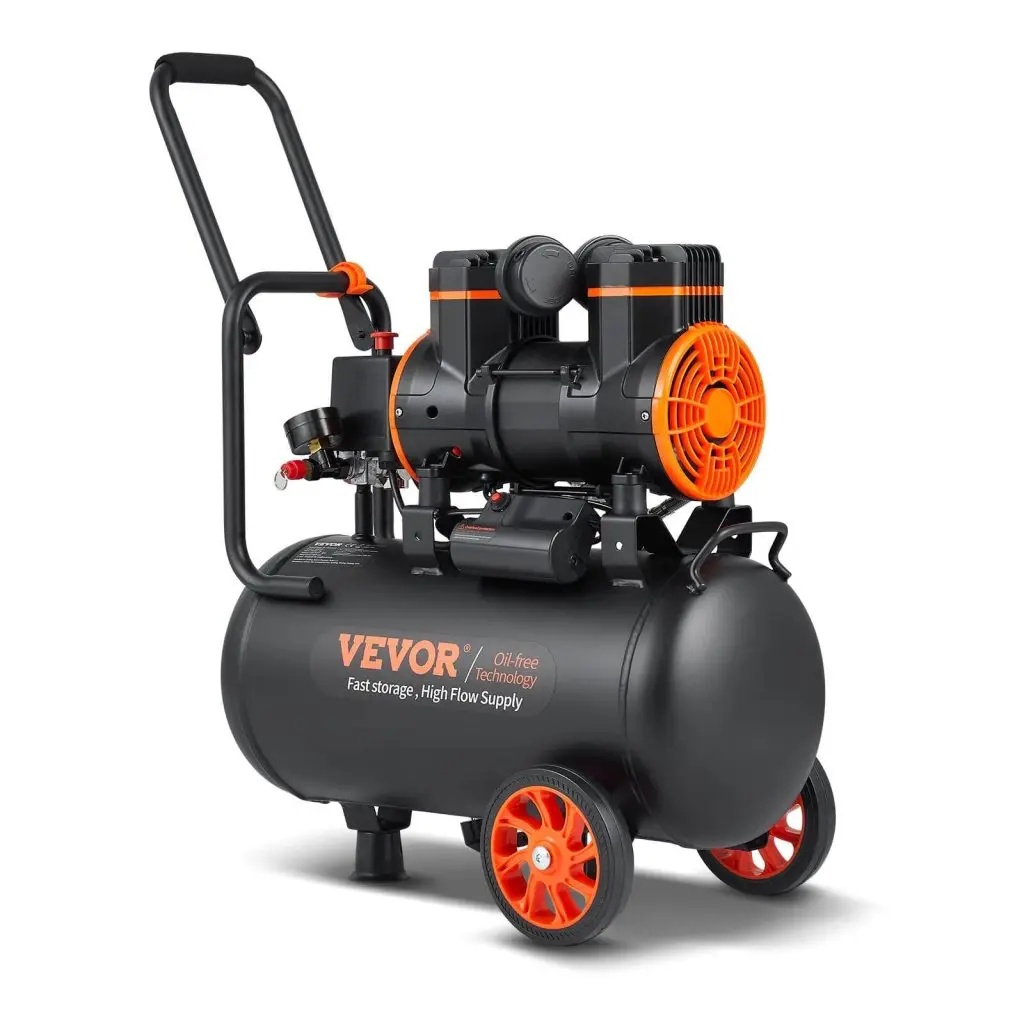
If a compressor has a 100% duty cycle rating, it can consistently deliver CFM & PSI at all times during usage. A 75/25 duty cycle rating means the air compressor would run three-fourths of the time, while a 50/50 duty cycle compressor runs 50 percent of the time. These details mean you’ll need a higher CFM rating to avoid frequent interruptions or stops between tasks.
For instance, if you run your air compressor for a total cycle time of 10 minutes, a 50% duty cycle means it will run for 5 minutes. That said, a duty cycle of 50-60% will suffice for intermittent tools like nail guns. But if you have continuous use tools like paint sprayers or sanders, look out for compressors with a 100% duty cycle. That helps your air compressor operate continuously at optimum CFM and PSI ratings without having to stop often.
Your air compressor applies pressure in cutting hard materials, loosening bolts, or performing other complex tasks. Consequently, you want to choose the perfect compressor size as too much pressure could lead to fatal errors with potentially lethal repercussions. For instance, the equipment could abruptly break down, and the high pressure could hurt the health/safety of individuals working around the equipment.
Calculating the Right Size: Practical Examples and Tips
Are you using multiple tools at once? Running several tools at once is an efficient way to achieve your goals, but you want to purchase a matching air compressor for various needs. To do this: combine the CFM requirements of each tool and you have the total CFM requirement you’re working with.
Step-by-Step Calculation Guide
Suppose you use the same air compressor in operating a half-inch drill that demands 30 CFM and a grinder that demands 60 CFM. Should you need to operate them simultaneously, add 30 CFM + 60 CFM to get a total demand of 90 CFM. That implies you’ll need an air compressor of at least 90 CFM of air. The same basic calculation applies when working with more than two pieces of equipment.
VEVOR’s Sizing Calculator: Simplifying Your Selection
Going through the various metrics and calculation instructions in this guide, it’s easy to get overwhelmed by how many factors are worth noting. However, an easier way out is trying out VEVOR’s sizing calculator. VEVOR’s custom sizing calculator simplifies your selection by helping you determine the perfect air compressor size for your unique needs.
Additional Factors to Consider When Choosing an Air Compressor
There are several other factors worth considering besides the terms of use when shopping for the perfect compressor size for you. These include:
- The power source: electric/gas-powered compressors
- Maintenance and performance considerations: oil/no-oil use cases.
Let’s see what each of these extra factors means when choosing an air compressor.
Power Source: Electric vs. Gas-Powered Compressors
Air compressors generally have one of two power sources: electricity and gas. Electric air compressors are renowned for being convenient, easy to use, and less noisy. On the other hand, gas-powered air compressors are ideal for high-demand and continuous-use applications. That said, either option also has some downsides worth noting.
Pros of Electric Air Compressors
- Convenience and accessibility via a plug-and-play solution that requires minimal setup and doesn’t need fuel.
- Lower noise levels compared to gas compressors.
- Lower operating costs in the long run with generally lower maintenance requirements and no gasoline expenses.
- No emissions, which makes them environmentally friendly, especially in enclosed places.
Cons of Electric Air Compressors
- Power limitation, as some electric models may lack the necessary power for heavy-duty operations.
- Reliance on electricity limits mobility, which could restrict them to remote locations with power supply.
Pros of Gas Air Compressors
- Higher power output and efficiency, making them capable of handling more demanding tasks, and longer on a single fuel fill than their electric compressors.
- Increased mobility and flexibility, since they don’t require an electrical outlet and can be used virtually anywhere, such as construction sites, or off-grid operations.
Cons of Gas Air Compressors
- Higher operational costs, due to gasoline and higher maintenance requirements.
- Environmental impact as gas compressors emit fumes and harm to air quality, especially in enclosed places.
- Portability challenges, as they’re heavier and might require more transportation effort compared to electric compressors.
Oil-Free vs. Oil-Lubricated Compressors
Another broad category of air compressors is oil-free vs. oil-lubricated compressors. Each category has its unique application, pros, and cons. Let’s see a brief explainer of the leading differences between both types of air compressors and how this could influence your choice when making a purchase.
Lubrication Requirements
Oil-lubricated compressors require oil to lubricate their moving parts while oil-free uses a different lubrication medium besides oil.
Maintenance Needs
Oil-lubricated compressors require more maintenance compared to oil-free lubricators. Neglecting routine maintenance practices like changing the oil or checking the oil filters could affect their lifespan or trouble-free use. Conversely, oil-free air compressors have fewer maintenance needs. However, they wear off faster and run hotter, which makes them often have lower life spans compared to properly lubricated oil compressors.
Maintenance Costs
Oil-lubricated air compressors are more expensive to operate since they use oil and require oil changes based on the manufacturer’s schedule. However, they’re generally more durable than oil-free air compressors, a quality that offsets the necessary operational costs.
Contamination Risk
If oil contamination isn’t a challenge with you or your team, an oil-lubricated air compressor can be a very reliable and effective tool for your activities. Otherwise, consider going for the oil-free alternative.
Mobility
Oil-free air compressors generally have lighter weights compared to oil-lubricated systems. That’s partly because they don’t require equipment like oil-water separators, gallons of oils, or oil filters as you’d find with oil-lubricated systems.
Do you need a unique system that works perfectly for you or your organization? VEVOR offers a slew of excellent air compressor options across various specifications and makes for your unique needs.
Why Choose VEVOR Air Compressors?
VEVOR Air Compressors don’t just spring from a reliable global brand, every item from the collection promises a blend of innovative features tailored to suit diverse needs. Additionally, VEVOR offers multiple size ranges and specifications, allowing you to make custom choices for your home, office, or industrial uses.
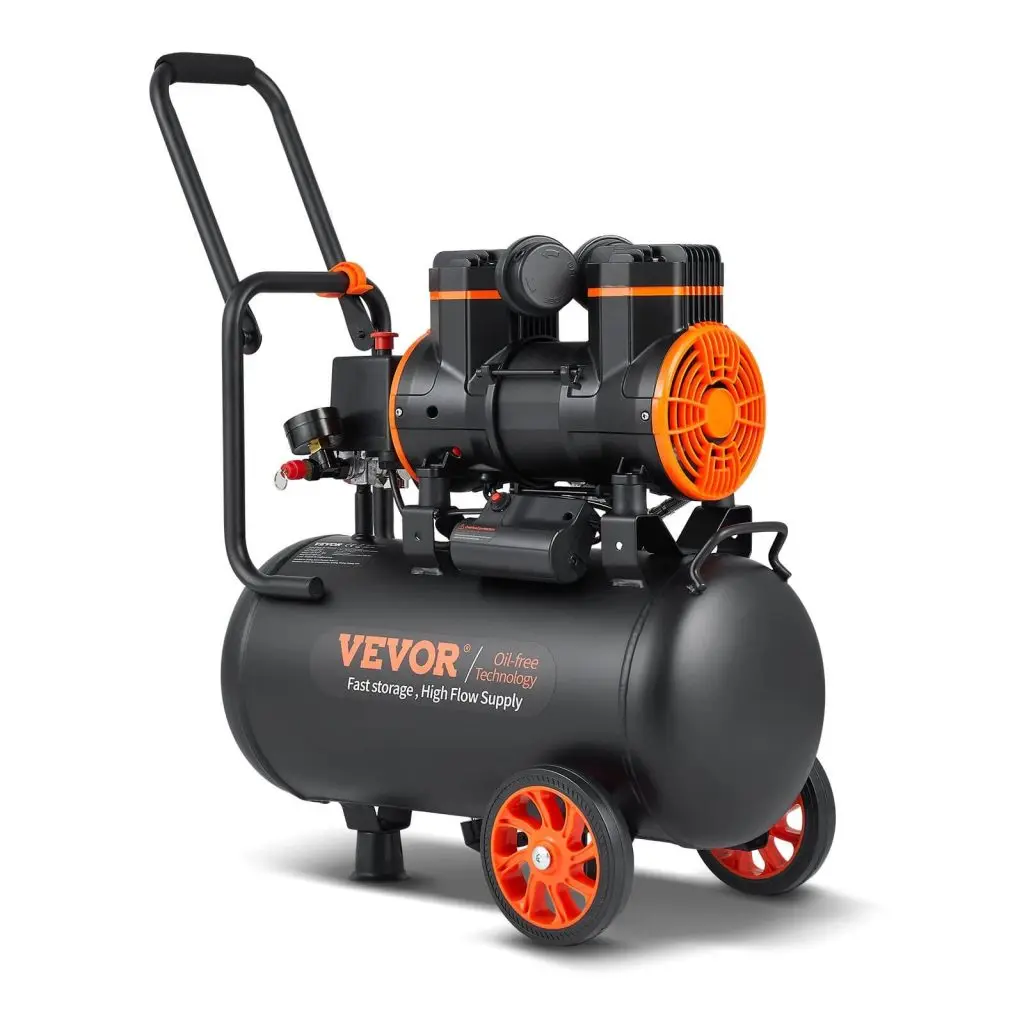
So, whether you’re going for this larger gas-powered 15 HP, 30-gallon-tank Air Compressor, the powerful 5HP Electric Air Compressor, or the oil-free, stationary, 80-gallon Industrial Air Compressor, there is a myriad of classic, functional, and modern air compressor options to try at VEVOR.
Summary and Final Thoughts
Air compressors are must-have tools for various industrial, automotive, construction – and even domestic – applications. However, selecting the perfect air compressor size is vital for optimal efficiency and your safety while using high-pressure equipment.
Generally, air compressors with lower CFM ratings can sufficiently run light-duty tasks; while others with higher CFM ratings from 50 and above would better suit industrial uses and other heavy-duty operations. These powerful tools also come in various specifications, ranging from electric/gas-powered air compressors to oil-lubricated/oil-free air compressors, depending on your unique needs.
Conclusively, your final choice depends on your unique needs and budget. That said, you also want to work with a reliable and reputable brand for all air compressor needs like VEVOR. Every air compressor item on VEVOR’s collection is powerful and specially built with modern functionalities and designed to suit various user needs. Once you know the right air compressor requirements for your activities, head on to the VEVOR website to explore their list of air compressors and purchase unquestionable quality you can trust.

